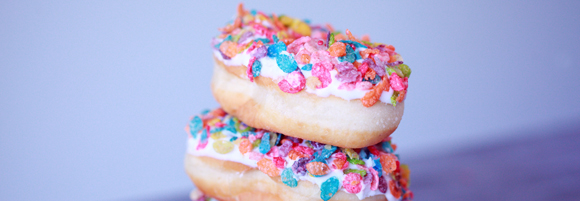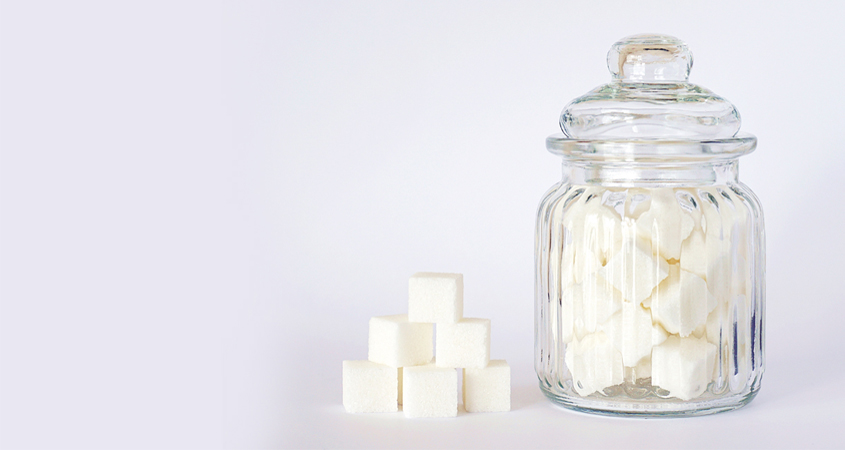In our naïve and perfect world, sugars are only found in sweets and fruits. I’m sorry to burst your bubble, but in recent years, there has been an increasing amount of ‘hidden sugars’ in packaged food such as yoghurt and energy bars. However, you’ll also find sugars in ‘healthy foods’ such as pasta sauces, breads, and salad dressing. In order to prevent diabetes in the future and to allow you perform at your peak health, I will share with you some important ways to help yourself, family and friends to avoid becoming sick from sugar.
In the past 30 years, the rate of diabetes has tripled according to the World Health Organization. By 2020, one in three Canadians will be living with diabetes or prediabetes. Every hour, 20 Canadians will be diagnosed with diabetes. We must stop debating the relationship between sugar and diabetes, like we did in the 1970s about tobacco and lung disease. Sugar is addictive and some experts would suggest it is toxic too. (See Dr. Robert Lustig’s YouTube lecture, Sugar: The Bitter Truth with more than five million views or Dr. Sanjay Gupta’s 60 Minutes piece Toxic Sugar).
So is the simple way of preventing diabetes to avoid sugar?
It would be if sugar wasn’t hidden so well in the foods we eat. It may surprise you to learn that 74 per cent of packaged foods now have added sugar. You’ll find sugar added in not only the obvious foods, such as soft drinks (including popular sports drinks such as Gatorade), but also ‘healthy foods’ such as yogurt and energy bars, and even savoury foods like pasta sauce, breads, salad dressing and ketchup.
Quantity and quality of sugar play a role as well. First, our bodies are digesting more carbohydrates, or sugars, than we’ve ever seen before. And not all carbohydrate calories are equal.
The sugars we ingest today are not from natural sources, such as from fruit; instead, they come from processed and manufactured sugars and from sugar substitutes. Although all carbohydrates break down into sugar within our bodies, they do so at different rates and in different ways depending on the source. Our pancreas and liver can’t handle these man-made sugars as readily. We store this excess sugar in our liver. This can lead to fatty or ‘foie gras’ liver disease, which can be just as deadly as other liver conditions. So you might look slim and healthy on the outside, but it may be a different story inside your body.

The World Health Organization came out with ground-breaking recommendations this year, recommending adults and children reduce their daily intake of free sugars to less than 10 per cent of their total energy intake. A further reduction to below 5 per cent or roughly 25 grams (six teaspoons) per day would provide additional health benefits.
What can you do to help yourself, family and friends to avoid becoming sick from sugar?
1. Get informed. There are a number of resources to read and watch. In addition to Dr. Lustig’s video, try to catch a movie called Sugar Coated, which was supported by our TELUS Fund. It will be screened in selected locations across Canada in the coming weeks and will be broadcast on TVO in Ontario May 27 at 9 p.m. ET.
2.Download the One Sweet app on iTunes; it’s the first reputable sugar tracker powered by the first database in Canada (and likely the world) to include the free sugar content in packaged foods. Dr. Mary L’Abbé, Professor and Chair of the University of Toronto, Department of Nutritional Sciences oversee the free sugar database. The TELUS Fund also supported this app with an investment of more than $167,000. Help us build the database with foods you’re encountering in your daily life.
3.Pass this blog and its content onto your friends and family. You will make a difference by being an informed health consumer and educate those around you too. After all, changing your eating habits begins with awareness.
More Facts About Sugar
- Free sugar is defined as sugar extracted from natural plant sources
- Sugar free usually means the product is sweetened with artificial sweeteners such as aspartame. Such chemicals, while void of sugar calories, do pose other health issues such as insulin resistance (a precursor to diabetes)
- North Americans consume an average of 66 pounds of added sugar each year
- There are at least 61 names for added sugar on food labels
- Liquid sugar, like that in soda and sports drinks, is the largest source of added sugar in the diet (36 per cent)
- Drinking just one 12-ounce can of cola or comparable soda every day can increase your risk of dying from heart disease by almost one third
Dr. Elizabeth Stavros N.D. Recommends: Glutamine Support Product
In times of stress or increased metabolic demand, glutamine is an important source of energy


